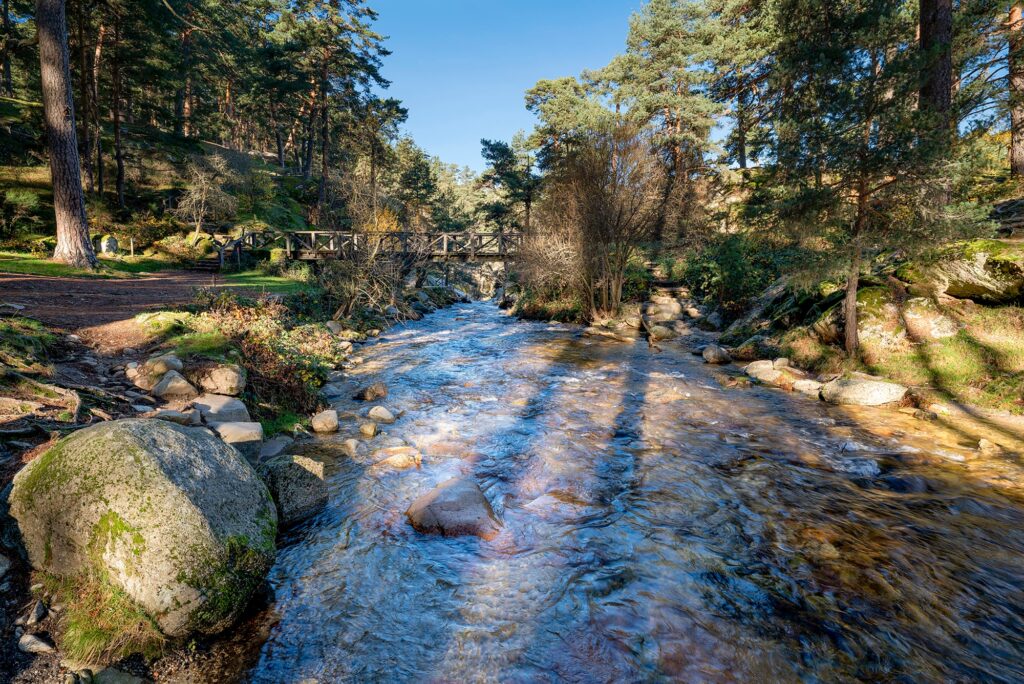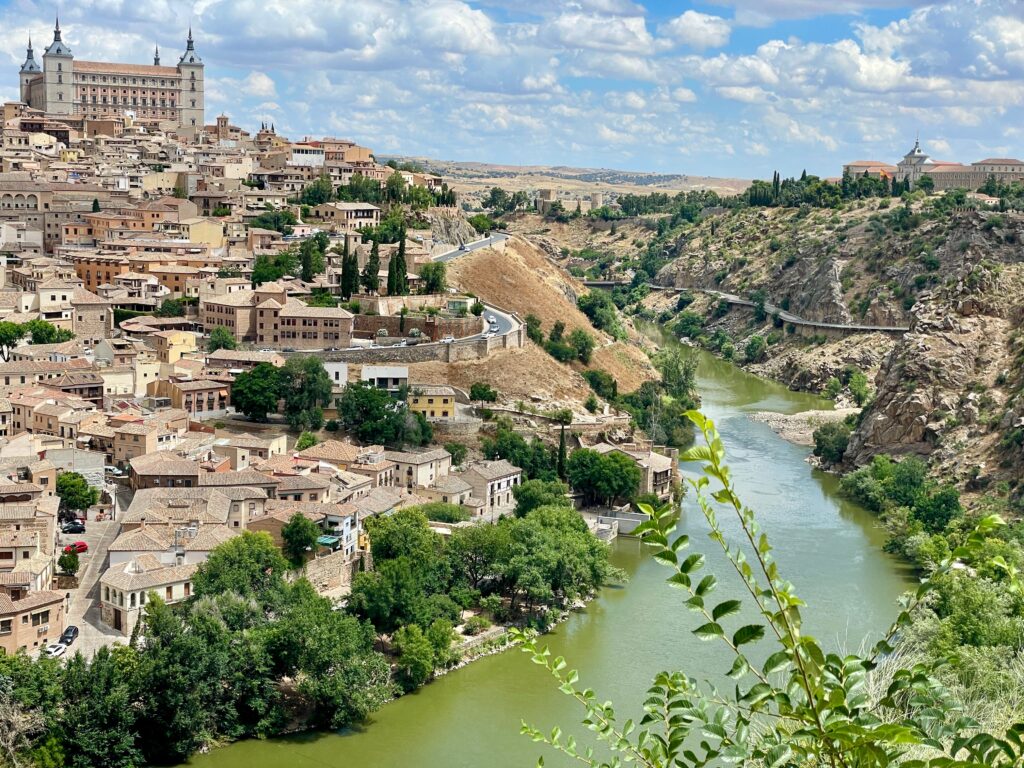Sierra de Guadarrama National Park stands out as one of Spain’s most treasured natural destinations. It beckons nature lovers with its majestic peaks, pine forests, and stunning glacial lakes. Located just an hour from Madrid, this park offers an accessible escape into serene wilderness. In this comprehensive guide, you’ll learn about the park’s highlights, best activities, and essential travel tips. You’ll also find an in-depth analysis of what makes Sierra de Guadarrama a top outdoor getaway, plus answers to frequently asked questions.

Location and Overview of Sierra de Guadarrama National Park
Sierra de Guadarrama National Park lies in central Spain, between the provinces of Madrid and Segovia. Established in 2013, it safeguards around 33,960 hectares of mountainous terrain. The park includes the eastern section of the larger Sierra de Guadarrama mountain range, which extends for about 80 kilometers.
Key Facts:
Highest Peak: Peñalara (2,428 meters above sea level)
Closest Major City: Madrid (approximately 50–60 kilometers away)
Terrain Features: Rocky slopes, pine forests, high-altitude meadows, and glacial cirques
The park is popular among residents of Madrid seeking an escape from the city. It also attracts international visitors who come to enjoy fresh mountain air and panoramic views. This region shelters endangered species and diverse habitats, contributing significantly to Spain’s ecological heritage.
Highlights and Key Attractions
Sierra de Guadarrama National Park hosts numerous captivating landscapes. Visitors often begin by exploring iconic peaks, scenic valleys, and accessible trails. Below are some must-see areas:
Peñalara Mountain
Peñalara is the highest summit in the park and a focal point for hikers. Its glacial cirque and lagoon area boast extraordinary views. Well-marked trails lead visitors past vibrant wildflowers and onto panoramic overlooks. On clear days, you can see Madrid’s skyline in the distance.
Things to Do at Peñalara:
Hike to Laguna de Peñalara: A moderate trail of around 5 kilometers round trip.
Summit Attempt: Ambitious hikers can climb to the peak for a bird’s-eye view.
Nature Photography: Capture wild mountain goats, rare bird species, and unique rock formations.
La Pedriza
La Pedriza is famous for its massive granite formations. This area offers challenging climbing routes, unusual rock shapes, and winding trails. Families also enjoy picnics near streams and natural pools. In spring, colorful wildflowers dot the slopes, making for a postcard-perfect scene.
Key Highlights of La Pedriza:
Rock Climbing: Ascend distinctive granite walls such as El Yelmo.
Hiking Loops: Enjoy short walks around rocky outcrops.
Wildlife Spotting: Keep your eyes peeled for Spanish ibex.
Cotos and Navacerrada
Puerto de Cotos and Puerto de Navacerrada are major mountain passes that grant straightforward access to various hiking and skiing spots. Both passes feature accessible amenities such as restaurants, cafés, and parking areas. Public transportation links also make these areas convenient starting points for day trips from Madrid.
Outdoor Activities in Sierra de Guadarrama
Adventure enthusiasts have no shortage of things to do. Whether it’s hiking, skiing, or simply wildlife photography, this park satisfies every nature lover’s dream. The mountainous terrain allows year-round enjoyment, with each season offering a different experience.
Hiking and Trekking
Sierra de Guadarrama National Park boasts a diverse network of trails. Routes range from easy family-friendly walks to technical ascents for advanced trekkers. Signposted paths include interpretive plaques highlighting local history and ecology.
Recommended Trails:
Siete Picos Route: A moderate trek through pine forests and rocky summits.
Camino Schmidt: A historic trail that connects Puerto de Navacerrada to Valsaín.
Pedriza Anterior Circular: Ideal for exploring La Pedriza’s granite landscapes.
Skiing and Winter Sports
Winter blankets the higher elevations with fresh snow, transforming parts of the park into popular ski resorts. Two notable ski hubs include Puerto de Navacerrada and Valdesquí. Both locations welcome beginners and seasoned skiers, offering groomed slopes and rental facilities.
Winter Sport Tips:
Dress in Layers: Temperatures can drop rapidly, especially on windy slopes.
Check Weather Forecasts: Snow conditions vary greatly throughout the season.
Opt for Weekday Visits: Weekend crowds can be heavier, so plan accordingly. Flora and Fauna
Sierra de Guadarrama hosts rich biodiversity. Visitors may encounter Spanish ibex, red deer, and wild boar roaming among forests of Scots pine. Overhead, watch for large birds of prey such as the Spanish imperial eagle or black vulture. Conservation efforts aim to protect these species and their fragile habitats.
.
Planning Your Visit to Sierra de Guadarrama
Proper planning ensures you make the most of your time in this pristine environment. Consider transportation, regulations, and local culture to create a memorable experience.
How to Get There
By Car:
Most travelers drive from Madrid or Segovia via well-maintained roads such as the M-601 or AP-6. Expect scenic mountain views along the route.
By Public Transport:
Commuter trains from Madrid’s Chamartín station run to Cercedilla. From there, regional buses connect to Puerto de Navacerrada and Puerto de Cotos. This option is budget-friendly and cuts down on parking hassles.
Entrance Fees and Regulations
There is no general entrance fee for Sierra de Guadarrama National Park. However, specific attractions or parking areas may have small fees. Park authorities encourage sustainable tourism by limiting visitor numbers in some zones, especially during peak season.
Park Etiquette:
Stay on designated trails.
Do not feed wildlife.
Collect and carry out all trash.
Accommodation and Dining
Options abound for those who wish to stay overnight. Mountain inns, rural hotels, and campsites cater to various budgets. Towns like Navacerrada and Cercedilla offer cozy guesthouses and easy access to the park.
Dining Tips:
Sample local dishes like roasted lamb (cordero asado) or Castilian soup (sopa castellana).
Visit traditional taverns for hearty mountain fare.
Pack snacks and water if you plan on spending the day hiking.
Sample Itinerary for Sierra de Guadarrama
Day 1: La Pedriza Exploration
Morning: Drive or take a bus from Madrid to Manzanares el Real.
Hike a moderate loop around La Pedriza, stopping at scenic viewpoints.
Afternoon: Enjoy a picnic by the river and watch for Spanish ibex.
Evening: Return to Manzanares el Real for a traditional meal of roasted lamb.
Day 2: Peñalara and Cotos
Morning: Travel to Puerto de Cotos early to start your ascent of Peñalara.
Midday: Lunch at the summit or near Laguna de Peñalara. Take photos of the awe-inspiring views.
Afternoon: Descend leisurely, taking note of wildflowers and native fauna.
Evening: Relax at a nearby guesthouse or hotel in Cercedilla.
Day 3: Skiing or Additional Hiking
Morning: If visiting in winter, head to Puerto de Navacerrada for skiing lessons or advanced slopes.
If it’s warmer, try the Siete Picos route for mesmerizing mountain panoramas.
Afternoon: Indulge in a hearty Spanish stew at a local eatery.
Evening: Return to Madrid or Segovia, or spend another night gazing at the stars in the clear mountain sky.
Useful Tips for a Memorable Visit
Check Weather Conditions:
The mountain climate can change rapidly. Pack layers, a waterproof jacket, and appropriate footwear.Carry a Map or GPS:
While trails are marked, unexpected turns can be confusing. A reliable map or GPS ensures you stay on track.Respect Wildlife:
Keep a safe distance from animals. Do not leave food out or attempt to touch wild creatures.Leave No Trace:
Help preserve the park’s natural beauty by bringing back any trash and minimizing your impact on the environment.Stay Hydrated:
Even in cooler months, altitude and exertion can lead to dehydration. Carry enough water to stay refreshed.Learn Basic Spanish Phrases:
English is spoken in tourist areas, but a few local words can enhance your experience.
Analysis: Why Sierra de Guadarrama Is a Top Nature Destination
Sierra de Guadarrama National Park meets the rising global demand for sustainable and easily accessible ecotourism. Its location near Madrid, combined with diverse terrain, encourages a wide range of outdoor activities. The park’s well-preserved ecosystems provide essential habitats for iconic species like the Spanish imperial eagle. Furthermore, strong conservation programs and visitor regulations minimize negative environmental impacts.
From an SEO standpoint, Sierra de Guadarrama holds a high volume of searches relating to “hiking near Madrid,” “skiing in central Spain,” and “nature getaways close to Madrid.” The region’s growing popularity among foreign travelers also elevates its online visibility. Travel blogs and official tourism websites highlight the park’s unique attractions, which boosts search interest. By focusing on targeted keywords (e.g., “Sierra de Guadarrama National Park,” “Peñalara hike,” “La Pedriza rock climbing,” and “skiing in Navacerrada”), you can optimize your content to appear in top results for Spanish travel and outdoor adventure queries.
FAQs About Sierra de Guadarrama National Park
1. What is the best time of year to visit Sierra de Guadarrama?
Spring and early summer (April to June) offer moderate temperatures and blooming wildflowers. Fall months (September to November) provide cooler weather and colorful foliage. For winter sports, December to March presents ideal snowfall conditions at higher elevations.
2. How do I reach the park from Madrid without a car?
Take the Renfe commuter train from Madrid’s Chamartín station to Cercedilla. From there, regional buses travel to Puerto de Navacerrada or Puerto de Cotos. This route is convenient, cost-effective, and allows you to avoid potential parking issues.
3. Is Sierra de Guadarrama suitable for families with children?
Yes, many of the park’s trails and recreation areas are family-friendly. However, choose routes labeled as easy or moderate if you have younger children. Always pack sufficient food, water, and warm clothes, as temperatures can drop unexpectedly at higher altitudes.
4. Do I need a permit to hike or camp in the park?
Generally, no permit is required for day hikes. However, wild camping is restricted in certain zones, so check official guidelines or inquire at visitor centers. Some areas also have visitor limits, especially during peak times, so plan ahead.
5. What type of wildlife can I encounter?
Common sightings include Spanish ibex, red deer, roe deer, wild boar, and foxes. Birdwatchers often spot the Spanish imperial eagle, black vulture, and various hawk species. Maintain a respectful distance from all animals and never feed them.
6. Are guided tours available?
Yes, guided tours are available through local adventure companies. They offer specialized trekking, climbing, or winter sports packages. Hiring a guide can enhance your experience by revealing hidden spots and providing cultural or historical insights.
7. What should I do in an emergency?
Call the European emergency number (112) if you need urgent assistance. It’s crucial to carry a fully charged mobile phone and let someone know your planned route before starting a hike.
Conclusion
Sierra de Guadarrama National Park is an enchanting natural haven that blends rugged mountain beauty with ecological importance. Its proximity to Madrid and range of activities make it a prime destination for hikers, skiers, wildlife enthusiasts, and photographers. Whether you’re tackling the summit of Peñalara or marveling at La Pedriza’s granite wonders, you’ll come away with a deeper appreciation for Spain’s central highlands.
Plan your trip with confidence, respecting local regulations and embracing sustainable travel practices. Explore hidden corners of the park, sample regional dishes, and immerse yourself in the rhythms of nature. From easy family treks to challenging mountain climbs, Sierra de Guadarrama offers a captivating escape at any time of the year. It’s your chance to connect with Spain’s wild side—just an hour away from the bustling capital. Safe travels and happy adventuring!

